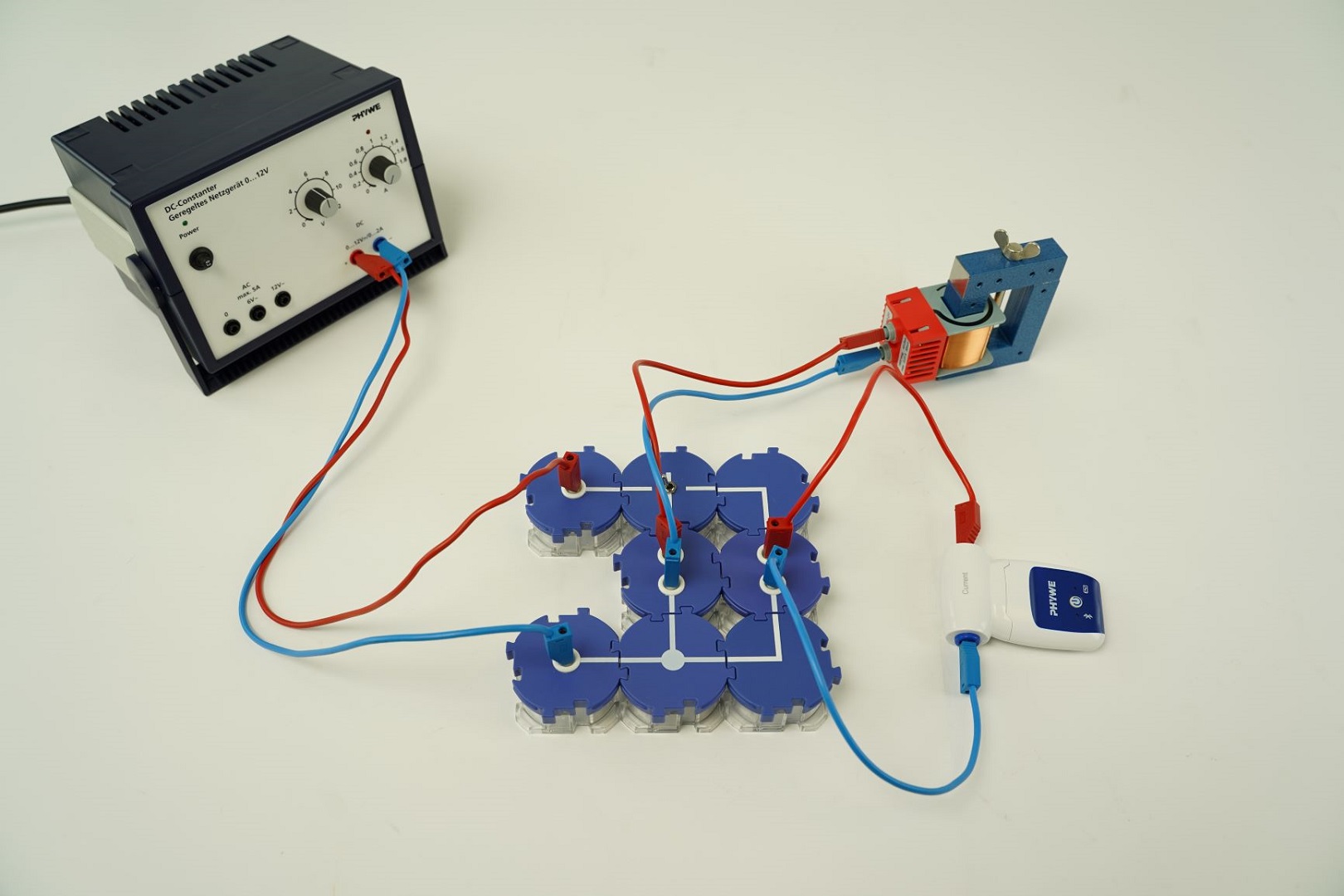Principle
Having recognized that a self-induction voltage is generated in a coil when a DC circuit is closed, which counteracts the applied voltage, the students are now asked to recognize that the self-induction voltage has the same direction as the original, applied voltage when it is switched off. The first experiment could take on the character of a confirmation experiment if the students can predict its outcome based on their knowledge of the law of induction and Lenz's law. In addition, the second experiment should demonstrate that the self-induction voltage can take on values many times greater than the original voltage.
Benefits
- Particularly comprehensible and didactically prepared description of the experiment (reference to everyday life, etc.) incl. protocol questions.
- Future-oriented teaching: Integration into digital science lessons with tablets or smartphones.
- Increased motivation among students through use of the intuitive measureAPP.
- Increased media literacy.
- No additional cable connections between the modules necessary - clearer and faster set-up.
- contact safety due to puzzle-like interlocking building blocks.
- Hard gold-plated, corrosion-resistant contacts
- Double learning success: electrical circuit diagram visible on the upper side and real components on the lower side
Tasks
What effect does a coil have when it is switched off?
Investigate the direction of the self-induction voltage that occurs in a coil when a DC circuit is opened.
Learning Objectives
With the experiment provided, the students should recognize that a self-induction voltage is produced when the circuit is switched off, which counteracts the drop in current.

